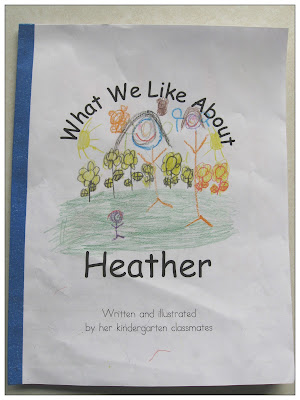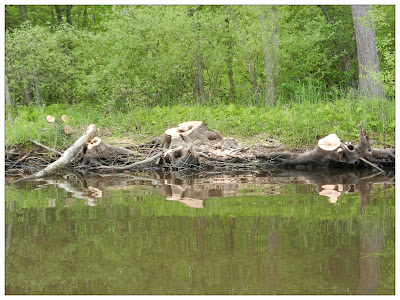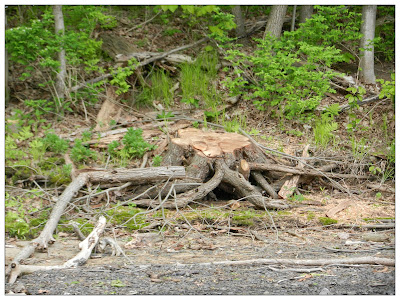In the morning, the mist lifts. In the evening it seems to descend, slowly filling the space with low clouds. Sometimes it looks like a magic carpet stretched across the river.
Here are a couple images of a misty evening last week:
 |
| Moonrise over misted bridge (on left) |
Yesterday afternoon, the river was filled with mist by 5:00, which was unusual. The bridge wasn't even visible.
A pontoon boat going past our dock could barely be seen, either.
A little later, I learned there were severe thunderstorm and tornado watches and warnings in our region.
I am no storm chaser, but as I drove home from a school event hearing a rumble of thunder in the distance and seeing an occasional thunderbolt, I felt a strong pull to go exploring. First, I stopped home to check the weather alerts, and upon learning that the most serious ones had expired, I jumped in the car to look for beauty.
A friend had mentioned recently that a particular graveyard on the river looks quite eerie at night when the mist rolls in. Although it wasn't dark, I wanted to experience the mist in the graveyard.
The sun had burst through an opening in the clouds and, filtered through the mist, cast the kind of golden light that is a photographer's dream. It was such a thrill to be there at that time.
But even more beauty awaited down the road where there was a clearing that revealed a rainbow - and several geese lined up on the shore as if pausing to savor it.
When I walked back to my car, I came upon a snapping turtle lumbering across the road.
And then, around the bend, a sky that was shockingly bright and golden for that time of night.
I drove home filled with excitement, wanting to get out on the dock as quickly as possible to experience the vibrant, dynamic sky before the day's light was extinguished for the night.
The river stage was beginning to fill with mist again for another spectral ballet.
And after I thought all was done for the evening, it became even more astonishing.
What I experienced this evening was not bliss; it was euphoria. I think I got a little too excited! And in my excitement, my lens cap dropped, rolled, and plopped into the river below our steps. (It was bound to happen sometime.) After some consideration, I decided to go ahead and retrieve it from the immersed rock on which it had come to rest. However, I might replace it anyway...
It was like a dream world on the river! And after all the colors of the sky had faded to bluish black, all that could be seen were the lights of the dredging boats and barges maneuvering through the night.
---------------------------
© Susan Meyer and River Bliss, 2012-2013. Unauthorized use and/or duplication of this material, including all photos, without express and written permission from this blog’s author/owner is strictly prohibited. Excerpts and links may be used, provided that full and clear credit is given to Susan Meyer and River Bliss (www.riverblissed.blogspot.com) with appropriate and specific direction to the original content.

















































